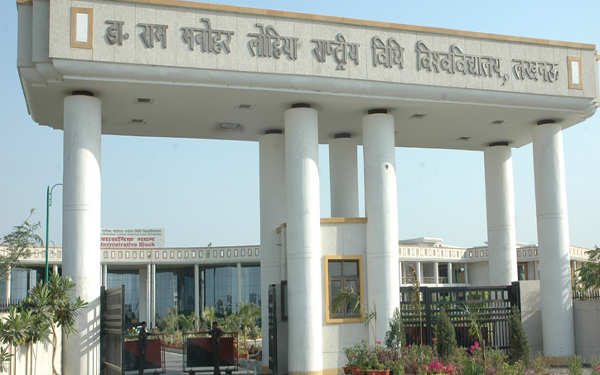On 27 March 2015, a bench of the Supreme Court comprising of Justice V. Gopala Gowda and Justice C. Naggapan has dismissed the SLP filed by Vice Chancellor/Convener of Dr. Ram Manohar Lohiya National Law University Lucknow which had challenged an order of the Allahabad High Court holding that the maximum age limit of 20 years for candidates wishing to appear in Common Law Admission Test this year (CLAT 2015) be removed. Thus, there will be no age limit for the CLAT aspirants this year. The Allahabad High Court had passed the above order in the petition filed by one Devasheesh Pathak and 20 other candiates.

It is pertinent to mention that CLAT is conducted for selecting candidates for admission to the prestigious National Law Universities (NLUs). CLAT 2015 is being conducted for admission to 16 NLUs. This admission test is conducted by rotation by one of the NLUs. This year, Dr. Ram Manohar Lohiya National Law University at Lucknow is conducting this CLAT.
For CLAT, the age limit of 20 years had been prescribed as the eligibility condition. This was challenged by many candidates before various high courts. In the Allahabad High Court, the above writ petition (No. 5219 of 2015) was filed which was allowed by the High Court on 26 February 2015. In its judgment, the High Court had noted that earlier the Bar Council of India (BCI) had prescribed the maximum age limit of 20 years for admission in the stream of Integrated Bachelor of Law Degree Program by means of Clause 28, Schedule III Rule 11 of the Legal Education Rule, 2008. However, later on the BCI withdrew the said condition by issuing a notification in the gazette.
The Allahabad also noted that the Punjab and Haryana High Court in the case of Ankit Bhardwaj Vs. Bar Council of India (13846 of 2010), had set aside the said the Clause 28, Schedule III Rule 11 of the Legal Education Rules, 2008 and held that the provisions of Clause-28 of Schedule-III appended to the Rules are beyond the legislative competence of the Bar Council of India and that Clause-28 is ultra vires the provisions of Section 7 (1) (h) and (I), 24 (I) (C) (iii) and (iiia) or Section 49 (I) (af) and (d) of the Advocates Act. It had further been held that even otherwise, the Rule is arbitrary as it introduces and invidious classification by dividing one Class of student into two artificial and irrational Classes by prescribing the maximum age for admission to law courses.
A single-bench of Allahabad High Court comprising of Justice Shashi Kant Gupta, also took note of the fact that similar orders were passed by various other High Courts. As a consequence thereof, the Bar Council of India withdrew the condition imposing the maximum age through a notification dated 28th September, 2013. Despite this, the maximum age limit of 20 years was prescribed for CLAT 2015. The High Court held that the University cannot go beyond the statutory provisions as have been laid down under the Advocates Act and the Bar Council of India Rules and that the CLAT organizing University went beyond the power envisaged under the Act by prescribing 20 years as the maximum age limit for CLAT Examination-2015. Accordingly, the condition of the age limit was quashed by the High Court.
Now, as mentioned above, the Supreme Court has dismissed the SLP against the above order of the above order of the Allahabad High Court. Thus, this High Court order becomes final and there will no maximum age limit for CLAT 2015. It is pertinent to mention that the last date for filing online application for CLAT 2015 is 31 March 2015.


So Dear Sonia, this means that any one irrespective of his her age can study Law and become a Lawyer, even at 50?